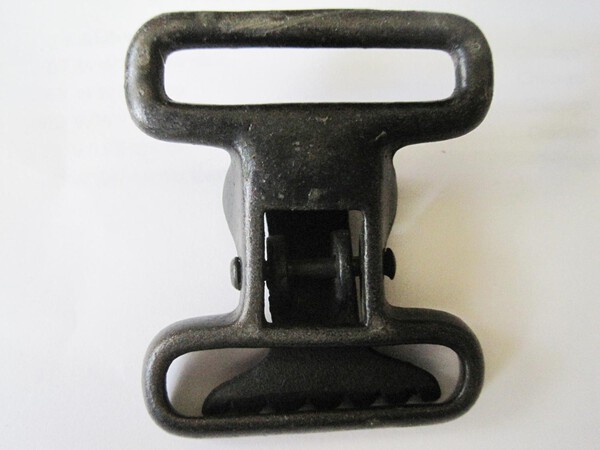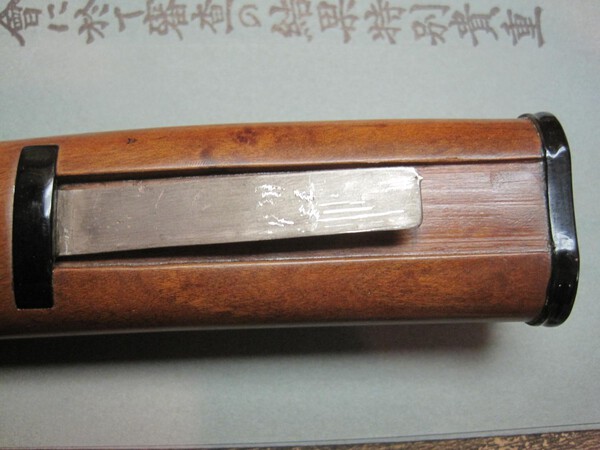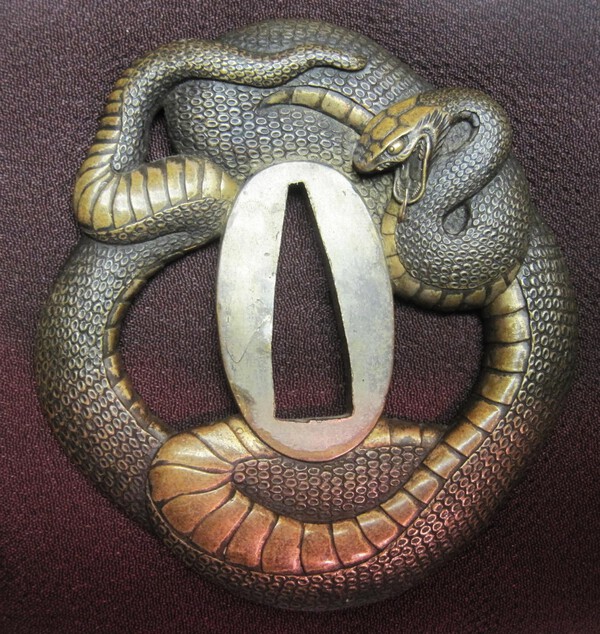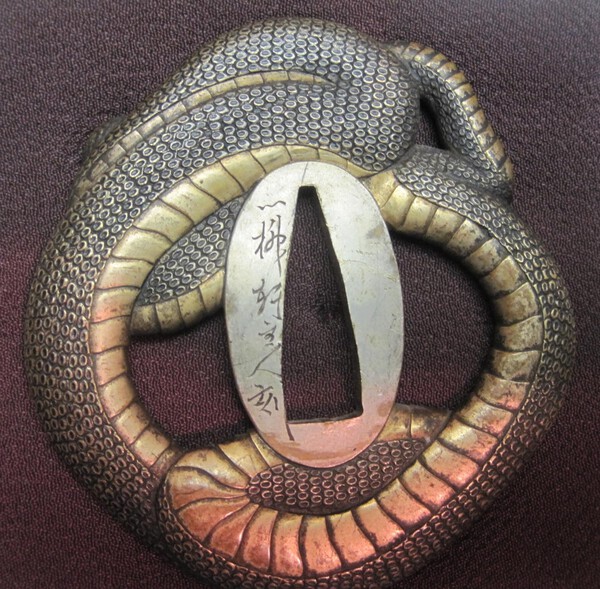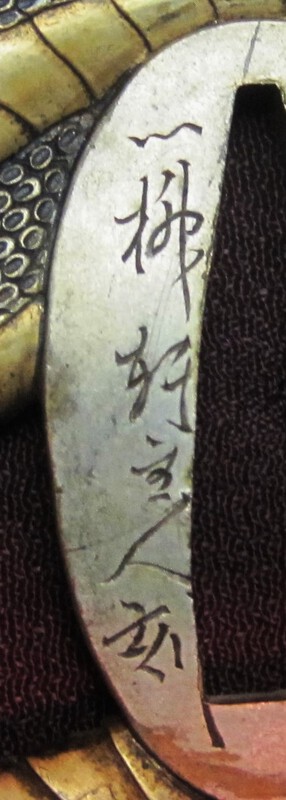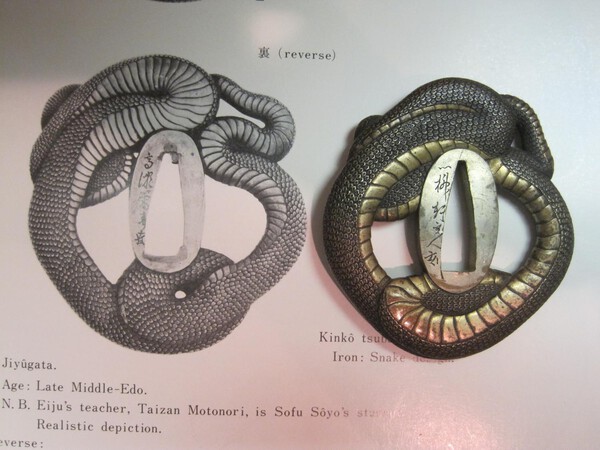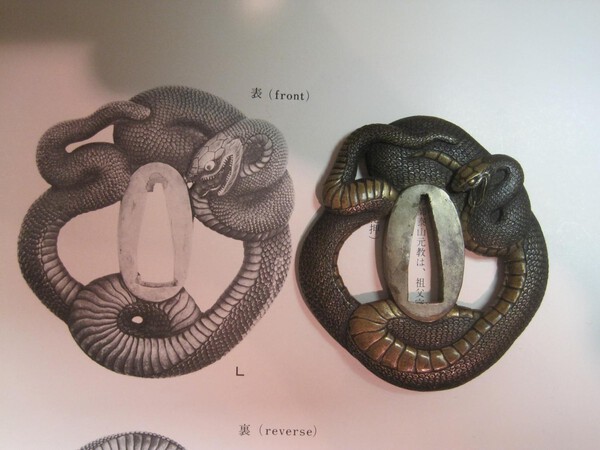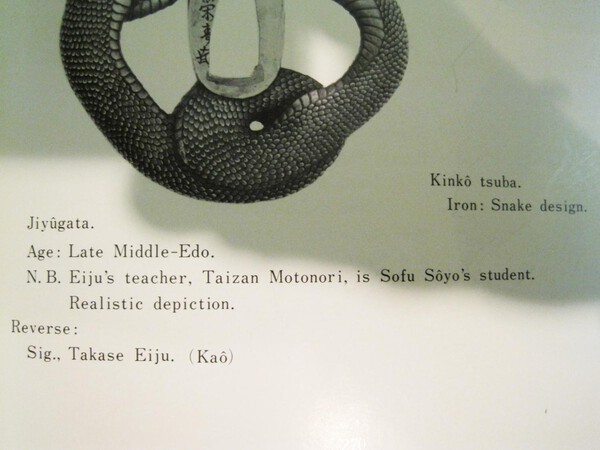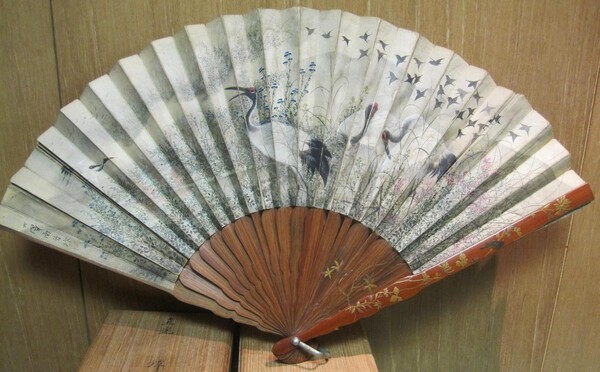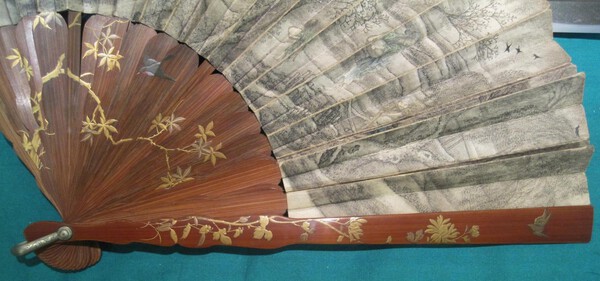-
Posts
703 -
Joined
-
Last visited
-
Days Won
4
Everything posted by Ron STL
-
Since this came from a fellow Japanese collector (recently deceased), I thought it was Japanese. From your replies, it looks like my thinking is incorrect. I'll just put it on my table at this weekend Chicago sword show and see if somebody wants it. Thanks for your comments. Ron STL
-
The attached shows a steel belt buckle with an anchor on it. I am guessing this is Japanese naval but if so, I'm unable to find it in Fuller's book. Can anyone identify this for me please? Thanks! Ron STL
-
Yes, well said Peter san. Not sure why you're though of as an "old guy," we first met around 1970 and I've never thought of you being old. I've said this before, but keep in mind that here in St. Louis, the door is usually open for visitors, especially serious newbees. Only a handful of us "sword guys" in town. Lost one guy last year and now lost another, so how good it would be to bring in some young blood in infect them with the Japanese sword virus! Ron STL
-
Morita san, thank you very much for this interesting information. Could this carving actually contain Arikoto's name? I'll look closer later today when there is more time. Now I'm hoping to learn what was carved on the opposite side of the saya above the kurikata. Ron STL
-
Interesting thought, Grant. I had to go take a look with a loop, but I can't see any indications of something being set into those depressions, only dust. Being in the trunk of the tree, I just thought those depressions added more depth to the carving. Ron STL
-
The photos are of a very nicely carved saya made of wood, type undetermined. I believe the carving depicts a poem regarding spring, perhaps. The work is also dated and I believe, signed, but I can't seem to pin down reading it. The saya is made different in that it has a place for a kozuka but not a kogatana. The previous owner (from the 1960s days in San Francisco) made a "T" silver piece to hold a kozuka, the "T" end being set in place under the horn piece at the bottom of the kozuka pocket. Very strange. I'd love to get a translation of the poem and of the date and possible maker, if that's what it is. Would guess this is Meiji work and it is very nicely made. It holds a signed and dated sue-koto Sukesada. Ron STL
-
Thanks Alan, that's good to know. At this time I do not own this tsuba but expect to fix that sometime next week. I do recall these always being pricey, even back in the 70's. Glad everyone enjoyed the photos and impute by y'all. Ron STL
-
Thought I posted this, but obviously not. This is indeed a cutting test. Markus wrote: Moro-chiwari te tsuchi/do shakuyo o ugatsu. [Cut through a body] With the breast splitter cut and entering a little over 30 cm the soil underneath. The cutting test inscription is insofar a little uncommon as the "chiwari" cut, i.e. the "breast splitter," usually comes without the prefix "ryo" (which means both). But I think the inscriber just used another term here and didn't try to say that he cut through two bodies (as for this, he would used a term like "futatso" or something like that). So my thanks to Markus and Morita san. Since starting this post the "lost" file on the Kanemichi has been found, so everything is good all around! Thanks again. Ron STL
-
All very interesting and educational comments, much appreciated. Ford's pointing out the "casting" structures and also how the scales were "punched" is so helpful to recognize. I remember seeing this type of kinko work showing up at sword shows back in the early 1970, often being sold by the Steinmetz brothers. Wonder what ever became of them? While an interesting motif, I'll stick with ko-kinko and good iron for the most part. I'm always amazed to learn how some this work is actually created, such as when Ford explained how radiating lines are cut on the surface of a tsuba. Thanks! Ron STL
-
Here is an interesting snake motif tsuba with a difficult to read (very difficult for me!) that I thought would be interesting to discuss. The tsuba, which appears to be brass, is beautifully carved and a rather exciting motif. The owner said he had noted: Ichi Ryu Ken shu jin Kizasmu and also, Hagiya Katsuhira Seiriken, in his records. He has been away from tosogu for many years, so I'm not sure how accurate any of this is. Comparing this tsuba with a similar tsuba in Dr. T's Toso Soran (which appears to be the work of the Master tsubako), the book example looks more "flowing" in form that the one in hand. While this tsuba appeals to me, it is of the type of kinko I've never had much experience in. Can anyone identify the maker and/or care to comment on it, good or bad? Ron STL
-
Guys and gals, This is an inscription on the ura of a large Seki Kanemichi katana the I've recently required. The paperwork on this sword is temporarily (hopefully to be found) misplaced. I seem to recall this inscription relates to a cutting test, but I can not see anything here that relates to a test. The sword came with NBTHK origami along with a letter from Mr.Tanobe with comments saying Dr. Homma had examined and discussed the sword with him. All the more reason to locate where this file was stored by my deceased friend. Meanwhile...help please. Ron STL
-

What Dealer Handles Wwii Era Japanese Swords?
Ron STL replied to Ron STL's topic in General Nihonto Related Discussion
Thanks for the recommendations. I'll see what can be done about convincing my friend's widow to be patient and put these swords into good hands (seller). I suspect all of her firearms will end up with Rock Island people. Right now I just wish she would sit back and unscramble what's there and go on from there. Note my position to do much. Just trying to help a good friend. Ron STL -
My sword interests are in true samurai swords, primarily Nambokucho and Kamakura (except for examples by Jirotaro Naokatsu, as friends know). However, one of our local sword guys recently died. He enjoyed Japanese swords from the war including blades like NCO swords, etc. I am not interested in tackling the job of disposing of these things, but only in helping his widow move things along, let's say. Other than eBay, I've not a clue if there are web sites out there dealing in this level/era of swords. More curiosity than anything, asking about this. One thing more about this particular collection of "stuff." He was a good friend who frequently visited here, one of "da boys" as I like to say. He was first, a quality Colt collector, one who also enjoyed Japanese swords, Civil War era, edged weapons from the islands, you name it. The shocking thing was to realize he did not "tag" and identify most of his collection! Oh my gosh, what a mess he left his widow. This once again points out the importance to keep good records of what you have and to make it reasonably easy for a survivor to dispose of one's collection when the time hits. What an eye opener it was to see the mess my friend left his widow to handle. Just good advice! Keep good records of your collection. Ron STL
-

Connoisseurs Guide To Japanese Swords
Ron STL replied to SAS's topic in General Nihonto Related Discussion
Sort of a delema as to what to do when a copy become available for resale. I of course purchased a copy when the book came out for something el cheapo...$65 perhaps. Total shock to see it for sale at a show (after no longer printed) for something like $250 or so. Maybe a realistic price is what Grey is offering it for and cheaper copies found are simply bargains. Everyone enjoys a bargain. Perhaps wise advice, to buy such worthy (useful) books when they come out and enjoy them, learn from them. Ron STL -

2016 Tampa Sword Show
Ron STL replied to Ed's topic in Sword Shows, Events, Community News and Legislation Issues
Feeling sad...I could not make Tampa again this year! Not fair!!! Ron STL -
Darcy, thanks! What you have written is both good advice and an education. While such treasures are out of my reach (budget) they do indeed seem like bargains compared to other fine art that comes on the market. Almost all of us who have gotten into this field, have stumbled into it when in the U.S., swords were plentiful, cheap, and some treasures where still sitting in closets and attics awaiting to be discovered. As for the TokuHo level paper (not Juyo), this may simply be the seller's choice. Myself, I have two daito sitting here that very likely would reach Juyo, but at my age I'd rather just enjoy them rather than see them out of my hands for a long while when going through a successful Juyo shinsa. They are what they are and if the next owner scores, more power to him. Finally, I've often wonder who one would sell a true treasure-sword. I find that a rather daunting thought! Again, thanks Darcy for your comments on the Kiyomaro under discussion! Ron STL
-
I've not been watching NMB of late and only now learned of Dr. Lissenden's death. How sad; another loss for all of us. We never met face to face, but we communicated on Namban tsuba and he was always a regular purchaser of our KTK publications each year as they were published. I wish we could have met one day, but distance prohibited that. May he be at peace. Ron STL
-
Thank you Morita san, for this interesting information on the fan. This certainly explains the fine quality of the workmanship used to create this fan. I purchased the fan as a gift to my now deceased wife since she was unable to travel with me to that sword show. All a nice memory to accompany the fan's history. Ron STL
-
While working on my records for various items here, it appears I never did learn details regarding a beautiful folding fan purchased back in the early 1980s from the late Bob Lewert during a Dallas sword show. Can someone translate the maker's information please? I'm not sure if it is Japanese or Chinese. Thanks for whatever can be said about this fan. Ron STL
-
Looks shakudo to me. You can see some "copper" color showing on the seppadai on the second tsuba. Looks fresh, but again I think that's because it is shakudo. Nice tsuba and Bishu seems a good call. Ron STL
-
It always bothers me to see quality antique blades like this looked at as making a profit. If the "quality" is there then we should "at times, at least" look not at profit but as preserving a fine old samurai era sword. Of course one could go broke trying to preserve every sword, but sometimes it's worth it. Idealistic? Yes, but worth considering if one wants to keep a sword and appreciate it. Just something to think about. Ron STL
-
Nice package. Notice the "pillows" on the tsuba, so the owner sent that extra step. The habaki is interesting in that I just came across that style on a Mishina Hisamichi purchased late last year. As was noted, the saya has much sori whereas the blade does not. But I've found old koshirae fitted to blades a number of times and if made to fit correctly, I would think the "owner" simply wanted to preserve a favorite koshirae in this way. Ron STL
-
What a shock it is to read this sad news! I was aware of Michael's health problems but he was one of those we think will never leave us. I will truly miss seeing him at the shows. Always the gentleman, 1st Class! I first met Michael when in Munich in 1988 while visiting family. My wife and I spent a wonderful day at his apartment doing kantei. Years later we closed the Marriot's bar one night, as he told of how we learned about swords, and then relearned everything later. Great memories to have of an old school friend! Ron STL
-

Thanks For Another Great Year!
Ron STL replied to b.hennick's topic in General Nihonto Related Discussion
Good words, Barry. My introduction to Japanese swords and fittings goes back over 50 years ago. I'm amazed today to see how much information is now available to both the novice and advanced collect compared to those early days. Each year I enjoy sitting down in my "sword room" and with some Japanese music and a little incense burning, and some sake' of course, to review the past year of collecting. This year was surprisingly lean for me although a wonderful Mishina shodai Hisamichi katana did brighten up my life in recent months along with several wonderful fittings. We are all blessed to have an appreciation of fine art, which is what we collect. The JSS/US is actively producing translations and a bimonthly newsletter, all of which continues to educate and encourage our studies. Established in the mid-1950s, I only wish more collectors would support the JSS/US with their membership. Those annual dues keep us alive. Meanwhile, all good things wished for everyone in 2016, the Year of the Monkey! Ron STL



